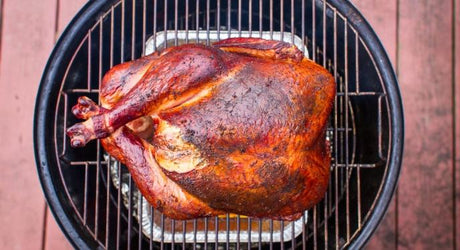
How to Smoke a Turkey / Cómo ahumar un Pavo
Por admin
The last turkey I smoked was during one of our Weber product photo shoots earlier this year. It was a huge bird, and if it turned out anything like the...
Leer más
Por admin
The last turkey I smoked was during one of our Weber product photo shoots earlier this year. It was a huge bird, and if it turned out anything like the...
Leer más
Por admin
8 -12 personasTiempo de preparación: 20 minutosTiempo de cura en seco: 12 horasMétodo de Grill: calor medio indirecto (350°/400°F – 180º/205º C)Tiempo de cocción: 2½ horas aprox.Equipamiento especial: 3 charolas...
Leer más